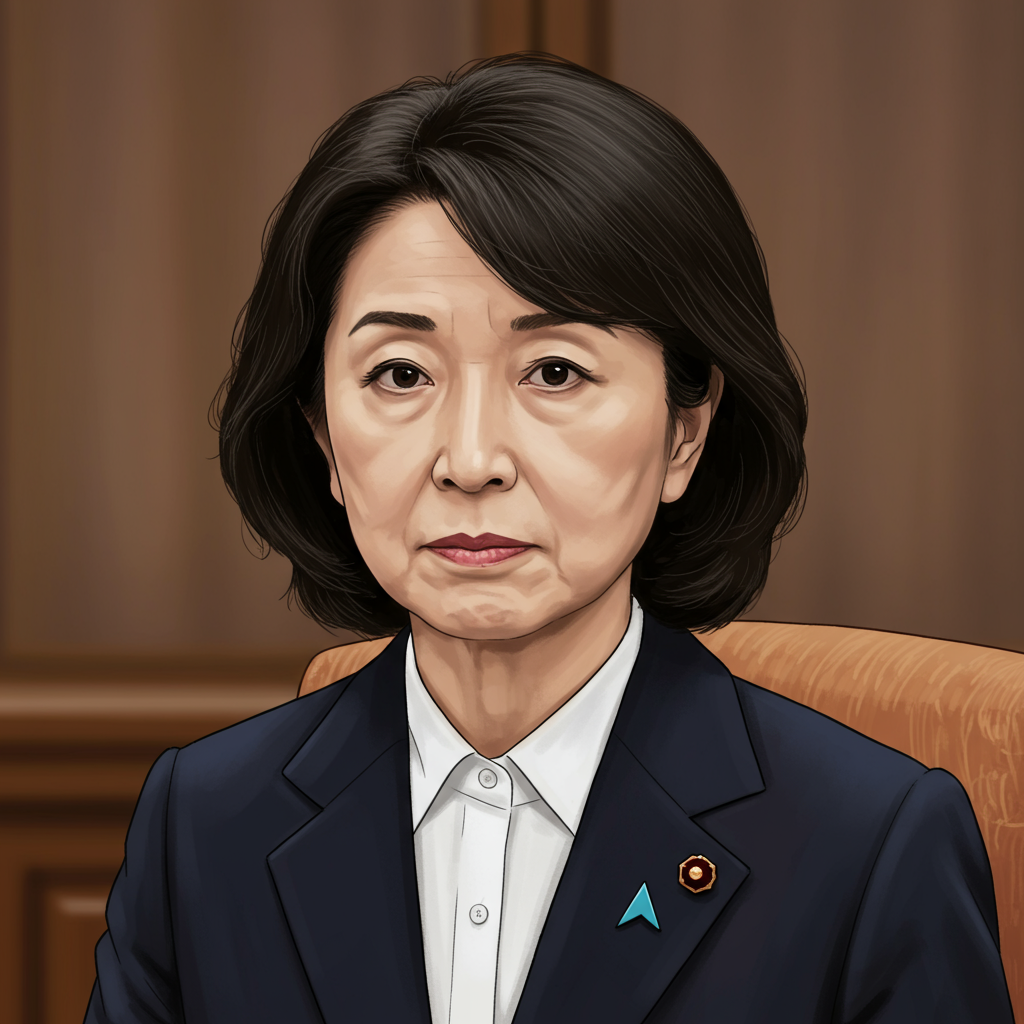In a dramatic escalation of the ongoing hostilities, an Israeli airstrike targeted the headquarters of Iranian state television during a live news broadcast on Monday, June 16, 2025. The attack, occurring on the fourth day of intensified conflict between Israel and Iran, sent shockwaves through the region, amplifying fears of a wider Middle East war.
The Strike on Iranian State Television
The incident unfolded in Tehran’s District 3 as a state-run news presenter for the Islamic Republic of Iran Broadcasting (IRIB) was on air. Suddenly, a massive explosion struck the building. Footage from the broadcast captured the anchor reacting to the blast, describing it as “the sound of aggression against the homeland, the sound of aggression against truth and righteousness.” Debris was seen swirling, plunging the studio set into darkness before the broadcast cut out. Reports also indicated an IRIB reporter covering the bombing outside the building sustained injuries, seen with blood on his hands and arms.
While initial reports on casualties were not immediately available, IRIB later confirmed “a number” of staff members were injured. Notably, the network managed to resume live coverage within minutes of the attack.
The Israel Defense Forces (IDF) confirmed the strike, stating they had issued warnings to residents in the vicinity hours beforehand, including phone calls, urging them to evacuate to minimize civilian harm.
Justifications and Condemnations
Both sides quickly offered justifications and strong condemnations regarding the strike on the state media building.
Israel’s Stance:
Israeli officials asserted the television station was a legitimate military target, claiming it was “used by the Iranian Armed Forces under the guise of civilian activity, covering up the military use of the center’s infrastructure and assets.” Israeli Defense Minister Israel Katz characterized IRIB as the “Iranian propaganda and incitement mouthpiece” and stated it was “on its way to disappear,” adding that the action was taken after a widespread evacuation of residents.
Prime Minister Benjamin Netanyahu echoed this, asserting the television station was not a legitimate news outlet but a tool of a totalitarian regime. He maintained that Israel’s strikes, including this one, have significantly set back Iran’s nuclear program by a “very long time,” emphasizing that the main goal of Israel’s operations is to dismantle Iran’s nuclear capabilities. Netanyahu also hinted at potential outcomes beyond dismantling the nuclear program, stating the Iranian “regime is very weak” and controversially refusing to rule out targeting Supreme Leader Ayatollah Ali Khamenei, suggesting such an action could “end the conflict.”
Iran’s Response:
Iran swiftly condemned the strike, with its ambassador to the United Nations, Amir Saeid Iravani, calling it a “direct assault on press freedom” and labeling Israel the “foremost enemy of truth.” An IRIB official, Hasan Abedini, called the strike a “military operation against the Islamic Republic of Iran news network” by the “Zionist regime,” vowing that the “voice of the Islamic revolution and the great Iran will not be silenced.”
Iran’s Foreign Minister suggested that a single phone call from Washington to Netanyahu could end the aggression and pave the way for diplomacy, accusing Netanyahu of attacking Iran to sabotage potential nuclear talks. President Masoud Pezeshkian urged Iranian citizens to unite against Israel’s “genocidal criminal aggression.” Following the attack on its broadcaster, Iranian state TV issued evacuation warnings for Israeli news channels N12 and N14 in retaliation. The Iranian Revolutionary Guard also warned that future strikes against Israel would be “more forceful, severe, precise and destructive than previous ones.”
International Reaction:
The Committee to Protect Journalists (CPJ), a nonprofit promoting press freedom, was “appalled by Israel’s bombing of Iran’s state TV channel while live on air,” according to its Middle East and North Africa regional director.
At the G7 summit in Canada, nations issued a joint statement affirming Israel’s right to defend itself, calling Iran the “principal source” of regional instability, and stating Iran must never have a nuclear weapon while also calling for de-escalation. However, a U.S. official indicated President Trump would not sign a statement specifically urging de-escalation.
U.S. President Donald Trump, who reportedly left the G7 summit early to focus on the situation, advised Iran to engage in dialogue, stating, “Iran is not winning this war, and they should talk, and they should talk immediately before it’s too late.” While insisting the U.S. had “nothing to do” with Israel’s bombing campaign, Trump threatened to use the “full strength and might” of the U.S. military if Iran attacked U.S. interests in the Middle East. He also publicly urged Tehran residents to evacuate. Reports indicate Trump initially opposed Israeli strikes but gave tacit approval and limited U.S. backing after being briefed on Israel’s plans. The U.S. has supported Israel by repositioning military assets, including expediting the deployment of the USS Nimitz aircraft carrier strike group and sending warships with ballistic missile defense capabilities, some of which have helped Israel shoot down Iranian missiles.
The Wider Conflict: Deadly Strikes Traded
The strike on state TV is part of a much broader and deadly exchange of attacks that has intensified since Friday.
Israeli Strikes on Iran:
Beyond the TV station, Israeli strikes have targeted key military infrastructure. This includes “precisely striking” command centers belonging to Iran’s elite Quds Force, an arm of the Islamic Revolutionary Guard Corps (IRGC), reportedly killing four officials, including the head of the IRGC’s Intelligence Organization. These strikes marked the first time Quds Force command centers inside Tehran had been targeted and represent a significant blow to Iran’s military leadership. Israeli strikes have also reportedly targeted a military base in western Tehran, caused explosions in eastern parts of the capital, and hit oil refineries. Israeli officials claim their forces have achieved “full aerial control above Tehran” and destroyed approximately one-third of Iran’s surface-to-surface missile launchers and around 50 military aircraft, including F-14 jets. Furthermore, Israeli attacks have reportedly killed much of Supreme Leader Ali Khamenei’s inner circle, including Iran’s top military official Mohammad Hossein Bagheri and commander-in-chief of the IRGC Hossein Salami, alongside other military and intelligence leaders, and at least nine nuclear scientists. The IDF also issued an evacuation order for Block 3 in North Tehran, indicating plans to operate against military facilities there.
Iranian Retaliatory Strikes on Israel:
Iran has responded with waves of missile and drone strikes targeting Israeli cities and military hubs. On Monday morning, Iranian attacks hit Tel Aviv and Haifa, killing at least eight people and injuring dozens across Israel. Targets included the Ramat David air base and residential areas. In Petah Tikvah, near Tel Aviv, a missile hit a residential building, killing four people in their 70s; images showed babies being rescued from the rubble. A branch of the U.S. embassy in Tel Aviv sustained minor damage and was closed on Monday. In Haifa, a missile strike reportedly shut down all refineries belonging to the Bazan oil refinery company, killing three people. Iranian state media claimed over 370 missiles and hundreds of drones were launched in retaliation since the escalation began. Iran has also claimed Israeli strikes hit civilian targets like the Farabi Hospital in western Iran, which it called a “gross violation of international law and a war crime.” Iran’s Revolutionary Guard issued an evacuation order for the Bnei Brak area near Tel Aviv, warning of further operations against military infrastructure there.
Casualties and Human Impact
The four days of open conflict have resulted in a rapidly rising death toll. According to Iran, Israeli strikes have killed at least 224 people since Friday, with over 90% being civilians, including 20 children, and injured over 1,000. Israel reports that Iranian retaliatory strikes have killed at least 24 people and injured nearly 600. Beyond direct casualties, the conflict has significant humanitarian impacts. Airports across the Middle East, including in Iran and Israel, have been closed or experienced chaotic situations, stranding tens of thousands. Tehran residents were reported to be stocking up on food. In Israel, thousands of residents have been evacuated, and extensive damage has occurred, with nearly 15,000 damage claims filed. There have also been reports of fake emergency messages being sent to phones in both countries. Adding another dimension to the tension, Iran has reportedly executed individuals accused of spying for Israel, and funerals have been held for Iranian personnel killed in Israeli attacks.
Future Outlook and Concerns
With both sides issuing warnings and demonstrating a clear intent to continue military action, the conflict shows little sign of de-escalating. Israel’s Ambassador to the U.N., Danny Danon, stated Israel would not stop until Iran’s nuclear program is eliminated, describing the operation as “much more challenging” and time-consuming than previous targeted strikes. Iran’s Revolutionary Guard’s warning of “more forceful” strikes underscores the potential for further intense exchanges.
Experts note the conflict highlights the risk of nuclear proliferation, suggesting to nations like Iran that possessing nuclear weapons could be seen as essential for deterrence. The Director General of the IAEA has also expressed concern about nuclear safety, given the proximity of conflict to potential nuclear installations.
Despite international calls for restraint and some limited diplomatic overtures, leaders on both sides appear unwilling to step back immediately, leaving the region on edge and facing the significant risk of a wider and even more devastating confrontation.




